Contents
- Which apples to choose? Red, yellow and green
- The composition and calorie content of apples
- The benefits of apples
- 9 science-backed health benefits of apples
- 1 Help to get rid of excess weight
- 2 Heals the heart
- 3 Apples significantly reduce the risk of diabetes
- 4 Possess prebiotic qualities, support healthy intestinal microflora
- 5 Some substances in apples help in the prevention of cancer
- 6 Apples Help Asthma Patients
- 7 Support skeletal health
- 8 Apples protect stomach lining from NSAIDs
- 9 Apples protect the brain
- The benefits of apples in cosmetology
- Benefits of apple peel and seeds
- 9 science-backed health benefits of apples
- The benefits of pickled apples
- Harm of apples
- How to store apples at home?
- Apples: Do’s and Don’ts
- Is it possible to eat apples at night?
- Conclusion
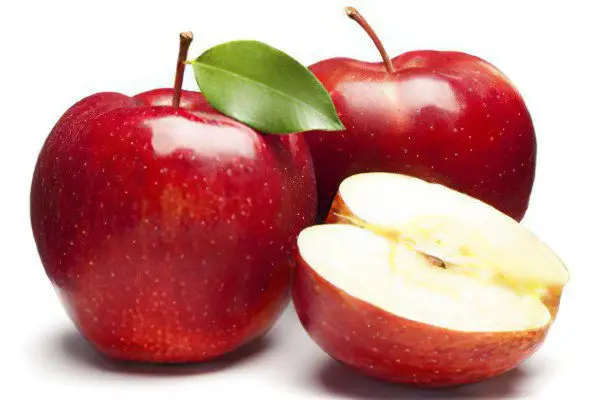
Apples are one of the world’s most popular fruits. Having spread from Central Asia, the house apple tree and its many varieties became the basis of almost every garden in Europe, China and the Middle East, and then in America, Australia and Africa.
In English and Chinese, there are similar proverbs that translate something like this: “whoever eats an apple a day, he does not visit the doctor.” In Russian, there is a similar saying: “an apple for lunch – and all diseases are gone.” This apt expression reflects the value of regular consumption of apples, which, due to the variety of varieties and methods of storage and preservation, can be eaten all year round.
However, for some people, this proverb is irrelevant, since for certain diseases, the use of apples must be reduced, if not completely stopped. In addition, the health benefits of apples can vary significantly between varieties. To understand when, how and what kind of apples you need to eat to maintain and restore the health of your body, read the continuation of this article.
Which apples to choose? Red, yellow and green
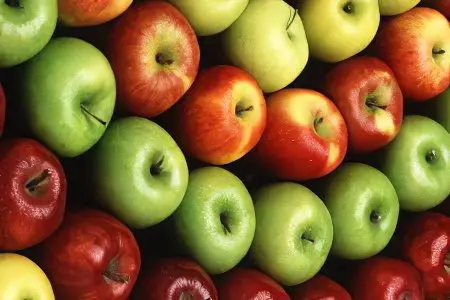
The color of a ripe apple indicates the presence of certain pigments in it. In addition, the benefits of apple are directly related to this pigment, and speak of the different concentrations of other substances that are characteristic of each variety.
Green apples. Most nutritionists consider green apples to be the healthiest. First of all, this is due to the fact that green fruits are generally easier to accept by any organism and much less likely than others (yellow, red, black) to cause specific allergic reactions. Therefore, children should be given green varieties of apples, which, moreover, contain more malic acid, which promotes digestion. It has been scientifically proven that green apples contain more ascorbic acid and have a lower glycemic index than red and yellow ones. This means that after eating them, the level of glucose in the blood rises more slowly, therefore, in diets for diabetics and patients with pathologies of the cardiovascular system, it is necessary to indicate: there are only green varieties of apples.
Red apples. Red varieties of apples are famous for their aesthetic beauty, they are most often used in various advertisements, although green apples are more beneficial in terms of the content of nutrients. Red apples, on the other hand, tend to have less acid (which means they are harder on the stomach) and more sugars (which makes them dangerous for diabetics and increases the risk of tooth decay in children).
Yellow apples. The fruits of yellow varieties differ significantly in taste from the previous two. Some of the most popular yellow apples of the Golden variety are not liked by everyone, as they contain more pectin, but less iron compounds. Although the concentration of iron compounds is better to check yourself by observing their oxidation after the pulp is cut. With such a simple practical method, you can see the difference in iron content even in apples from the same tree. Yellow apples also heal the liver and promote the excretion of bile.
The composition and calorie content of apples
Calories 52 KKal
- Fats:
0,17 g
- Proteins:
0,26 g
- Carbohydrates:
13,82 g
- Water:
85,56 g
- Ash:
0,19 g
- Cellulose:
2,4 g
Vitamins (in 100 g): | Quantity | %RDN |
Vitamin C (ascorbic acid) | 2,6-31 mg | 24,3% |
Vitamin B3 (PP, nicotinic acid) | 0,2-2,0 mg | 5,5% |
Minerals (in 100 g): | Quantity | %RDN |
Bor | 245 mcg | 350% |
Rubidium | 63 mcg | 63% |
Vanadium | 4 mcg | 12,5% |
Silicon | 2-5 mg | 11,7% |
Hardware | 0,1-2,2 mg | 10,5% |
Cobalt | 1 mcg | 10% |
Full chemical composition ➤
Other important connections:
Phytosterols — 12 mg (21,8% of RDI)
Purine — 6 mg (5% of RDI)
Oxalic acid — 1,5 mg (0,4% of RDI)
The weight of an average apple is approximately 182 grams. According to the American metric system, this weight corresponds to 1,5 cups. If the diet provides for a daily calorie intake of 2000, two cups of apples are acceptable.
Eating one medium-sized apple will give you:
Carbohydrates – 25 g.
Fiber – 4 g.
Vitamin C – 14% of the recommended daily amount.
Potassium – 6% of the required daily allowance.
Vitamin K – 5% of the recommended daily amount.
In addition to the listed valuable substances, one medium apple contains from 2 to 4% of the recommended daily intake of manganese, copper, vitamins of group B, A, E.
Most manufacturers do not list the content of polyphenols on the label, which are natural plant compounds that are extremely valuable for human health. Apples have been found to be one of the best sources of polyphenols.
For maximum plant fiber and polyphenols, eat apples with the skin on. Studies have shown that the skin contains almost half of the total amount of fiber and polyphenolic compounds.
The benefits of apples

Fresh, freshly plucked from a tree, an apple contains many useful substances that the body needs daily for a normal, healthy life. The main and especially necessary among them are vitamins retinol, a set of various beta-carotenes and ascorbic acid.
Due to the fragility of vitamin C, which is destroyed during long-term storage, grinding or heat treatment of the fruit, it is recommended to eat raw apples. The amount of ascorbic acid in apples is determined by their maturity, variety and conditions in which the tree itself grows, therefore, significant fluctuations in this indicator are possible (in some apples it can be 3-5 times more than in others).
The presence of another category of complex organic compounds that are beneficial to the body – pectins – provides apples with a low glycemic index, although, as already mentioned, it is lower in green fruits than in red and yellow ones.
But the benefits don’t end there. Apples contain the daily norm of flavonoids, which play a significant role in metabolism, and enter our body only with plant foods. They change the activity of certain enzymes so that the synthesis of uric acid slows down and the catabolism of formic acid accelerates. It improves the condition of patients with gout, rheumatism, eczema and other skin and joint diseases.
It is pleasant to quench your thirst with apples, as on average these fruits contain 87% pure water. The most important substances for life – fats, proteins and carbohydrates – make up 0,4, 0,4, and 11% of an apple, respectively. Separately, dietary fibers, or fiber, are considered – they are only six tenths of a percent in the pulp and peel. A whole percentage of the mass of an apple is given to pectins, and 0,8 g to ash compounds. Apples are a low-calorie food, since on average 100 g of an apple contains only 47 kcal.
9 science-backed health benefits of apples
1 Help to get rid of excess weight
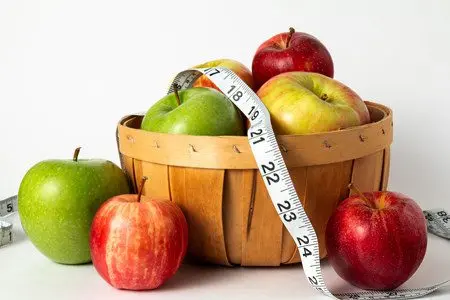
Eating apples quickly provides a feeling of satiety. Fiber and a large amount of water are responsible for this.
During one of the experiments, some of the subjects received whole apple slices before meals. This group noted a more pronounced feeling of satiety than those who consumed apples in the form of juice, puree, or completely excluded apples from the diet. A side-by-side analysis showed that individuals who ate a few apple slices before meals consumed, on average, 200 fewer calories than those who ate immediately. [1].
Another study involved 50 overweight women. All participants were divided into two groups. The experimental woman ate apples for 10 weeks, the control woman ate oatmeal cookies, which contain the same amount of fiber and kilocalories. The control analysis showed that in the apple group, all participants absorbed much fewer calories and lost an average of 1 kg of weight. [2].
Nutritionists and doctors are unanimous in their opinion that apples contain a high amount of fiber, therefore they completely eliminate the feeling of hunger without allocating extra calories. Most of the nutritional elements found in apples are endowed with properties that facilitate the process of losing weight.
In the laboratory, a study was organized involving obese mice. The experimental group received supplements in the form of apple juice concentrate and finely chopped apples. An analysis of the individuals of this sample showed a decrease in weight, a decrease in the level of low density lipoproteins (“bad” cholesterol), total cholesterol and triglycerides. The control group showed no such effects. [3].
The data obtained are the reason for the organization of larger studies of the effect of apples on weight control.
2 Heals the heart
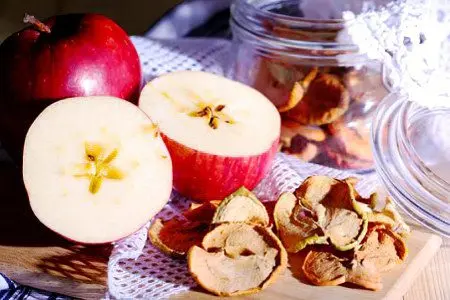
Most experts are convinced that eating apples helps reduce the risk of developing heart disease. This preventive effect is associated with a high level of plant fibers that can reduce blood cholesterol levels.
Apples contain a huge amount of polyphenols, most of which are concentrated in the peel. Polyphenols are powerful antioxidants that can protect heart cells from oxidative stress.
Of the total number of polyphenols, epicatechin should be distinguished. This compound has antihypertensive properties, which is important for individuals suffering from high blood pressure.
Analysis of one of the studies showed that apple flavonoids reduce the risk of stroke by 20% [4].
In order to compare the effectiveness of apples and statins in high cholesterol levels, a special study was organized. It turned out that apples have almost the same effectiveness as statins, they affect the reduction of mortality from heart disease in the same way as drugs [5].
Some experts treat the data of this study with caution, explaining this by the lack of control stages. Nevertheless, the obtained data aroused increased interest, and the possibility of organizing a larger experiment is currently being considered.
Another, independent study showed that fruits with white flesh (apples, pears) reduce the risk of strokes. Eating 25 grams of apples reduces the likelihood of cerebral hemorrhages by 9%, and increasing the dose improves safety [6].
3 Apples significantly reduce the risk of diabetes
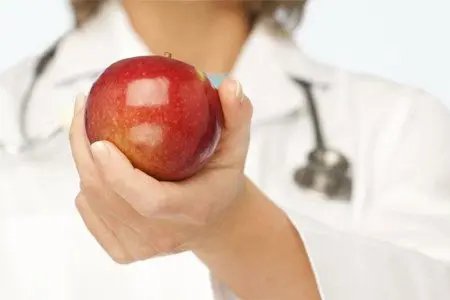
A large-scale experiment showed that eating one apple a day reduced the risk of type II diabetes by 28%. The preventive effect is maintained at a high level even when several apples are consumed during the week. The control group showed that the absence of apples in the diet maintains a high likelihood of this dangerous endocrinological disease. [7].
Scientists link the ability of apples to influence the development of diabetes with a high content of polyphenols. These biochemical compounds protect pancreatic beta cells from damage and aggressive internal and external factors. Damage to the beta cells responsible for insulin synthesis is characteristic of type II diabetes.
4 Possess prebiotic qualities, support healthy intestinal microflora
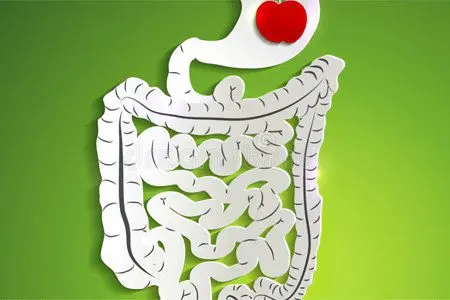
Apple pectin has the qualities of prebiotics, which is one of the types of plant fibers necessary for the nutrition and reproduction of beneficial bacteria.
Fiber is not digested in the small intestine, but passes into the large intestine. Here, some of the nutrients are absorbed by the beneficial microflora. The rest is converted into useful substances necessary for normal human life. [8].
Experimental results suggest that apple pectin supports normal metabolism, protecting against the development of obesity, type II diabetes, heart and vascular diseases.
5 Some substances in apples help in the prevention of cancer
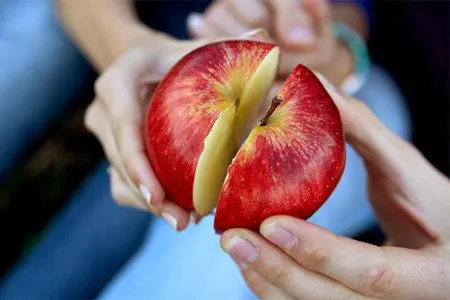
Laboratory studies have shown that certain plant compounds found in apples can resist the growth of cancer cells. [9].
Based on the data obtained, a study was organized in which women with diagnosed oncological diseases took part. Eating apples daily has been shown to reduce cancer deaths [10].
There is an assumption that the anti-cancer effects are realized due to the anti-inflammatory and antioxidant properties of apples.
6 Apples Help Asthma Patients

Apples contain many antioxidants that protect the tissues of the lungs, the bronchial tree from oxidative stress.
To study these properties, a large-scale study was organized, in which 68 thousand women took part. It turned out that sufficient consumption of apples provides a stable reduction in the risk of bronchial asthma. Even a quarter of an apple a day helps reduce the development of this dangerous disease by 10% [7].
The study of the composition of the fruit showed that the skin contains the flavonoid quercetin, due to which the anti-inflammatory and immunomodulatory effect of apples is realized. The combination of these two properties has a pronounced inhibitory effect on the mechanism of development of asthma and allergic conditions.
7 Support skeletal health
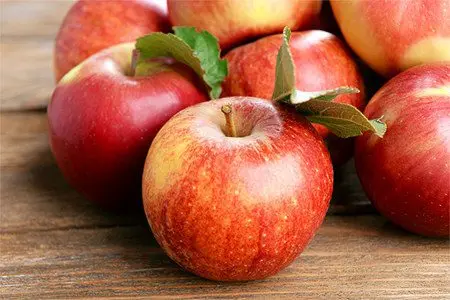
A marker that determines bone health is bone density. Apples have been found to increase bone density.
Scientists believe that the improvement in bone tissue is realized due to the antioxidants and anti-inflammatory components of fruits. Initial assumptions about the benefits of apples for bone health have been confirmed by several studies. [11].
Participants in one of the studies were divided into two groups. In the first group, women consumed fresh apples, peeled apples, or applesauce daily. In the second group, apples were completely excluded. The control analysis showed that the participants in the experimental group lost less calcium than in the control sample [7].
8 Apples protect stomach lining from NSAIDs
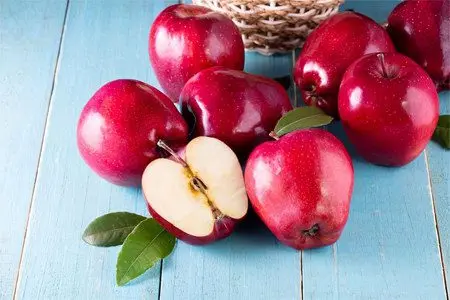
Non-steroidal anti-inflammatory drugs (NSAIDs) have analgesic, antipyretic, anti-inflammatory effects, but at the same time have a negative effect on the stomach.
Researchers are looking for a drug that can protect the gastric mucosa from drug damage. For example, a test-tube experiment with rats showed that freeze-dried apple extract had a similar protective effect. All animals showed the preservation of stomach cells after taking NSAIDs. [7].
Analyzing the effectiveness of apple extract, scientists came to the conclusion that catechins and chlorogenic acid are of particular value.
In order to confirm the protective effect of apples from the side effects of NSAIDs on the human body, additional studies have been initiated.
9 Apples protect the brain
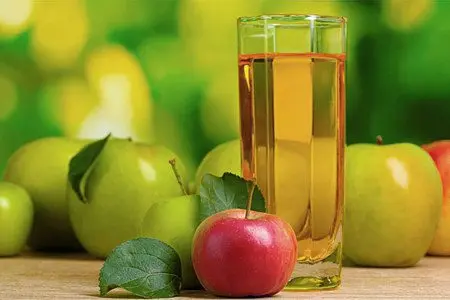
Traditionally, apple peel and pulp are examined. However, some observations suggest that apple juice is useful for age-related dementia.
An analysis of the condition of animals treated with apple juice extract showed lower concentrations of harmful reactive oxygen species (ROS) in brain cells. It is ROS that is associated with a decrease in intellectual status. [12].
The active compounds in apple juice retain the specific neurotransmitter acetylcholine, which declines with age. Scientists have established a direct relationship between insufficient amounts of choline and the development of Alzheimer’s disease [7].
Do not forget that whole apples are as good for brain health as apple juice. In addition, an apple can be eaten at any time.
The benefits of apples in cosmetology

Applesauce, juice, cuttings and even flowers have long been used by the beautiful half of the population of Eurasia as a raw material for the preparation of various cosmetics. These ingredients help to refresh the skin, give the face a ruddy look, remove the top layer of dead epidermal cells and thus remove fine wrinkles. Since many significant holidays occur during the winter, there are also recipes using dried and soaked apples.
The simplest way that everyone can quickly improve the condition of facial skin is apple massage. To do this, you need to take a slice of a fresh apple and massage the skin of your face with it, especially in the area around the eyes and on the cheeks. This procedure cleanses the pores, slightly moisturizes the skin, removes puffiness and bags under the eyes.
In order not to harm your skin, select varieties of apples that correspond to its type. Be guided by the principle: the drier the epidermis, the sweeter the apple should be. That is, oily skin needs sour fruits.
Interestingly, even a product such as apple cider vinegar (meaning a natural product, not a flavored table one) can be used for daily washing if you mix a teaspoon in half a liter of purified water. This mild solution is suitable for all skin types. Especially for normal skin, you can also prepare a decoction for washing green apples: 50 grams of peel per 300 ml of water are boiled for 5 minutes with orange peels in a steam bath, then an hour is infused in a dark place. If you add cinnamon to this decoction, you get an excellent anti-aging mist, which can be sprayed evenly over the entire surface of the face with a spray bottle.
Baths based on a mixture of sunflower or olive oil with apple cider vinegar in equal proportions are very useful for hands and nails.
With the help of fresh apples, it is possible to get rid of warts without harming the skin. The classic method of removing growths of the papillomavirus is a strong alkaline agent “celandine”, which can burn the epithelium. If for a whole month, 5 times a day, rub the warts with a slice of fresh green apple, a similar effect is produced (the neoplasms simply dry out and fall off), but without the danger of getting a chemical burn.
And the most unexpected thing is that a reliable remedy for strengthening hair is made from apple leaves. To do this, the leaves of apple trees of summer varieties are boiled for 10 minutes in the proportion of 50 g of dried raw materials per 0 l of water. Strained and cooled broth should be rinsed with problematic hair after each wash with any shampoo.
Benefits of apple peel and seeds
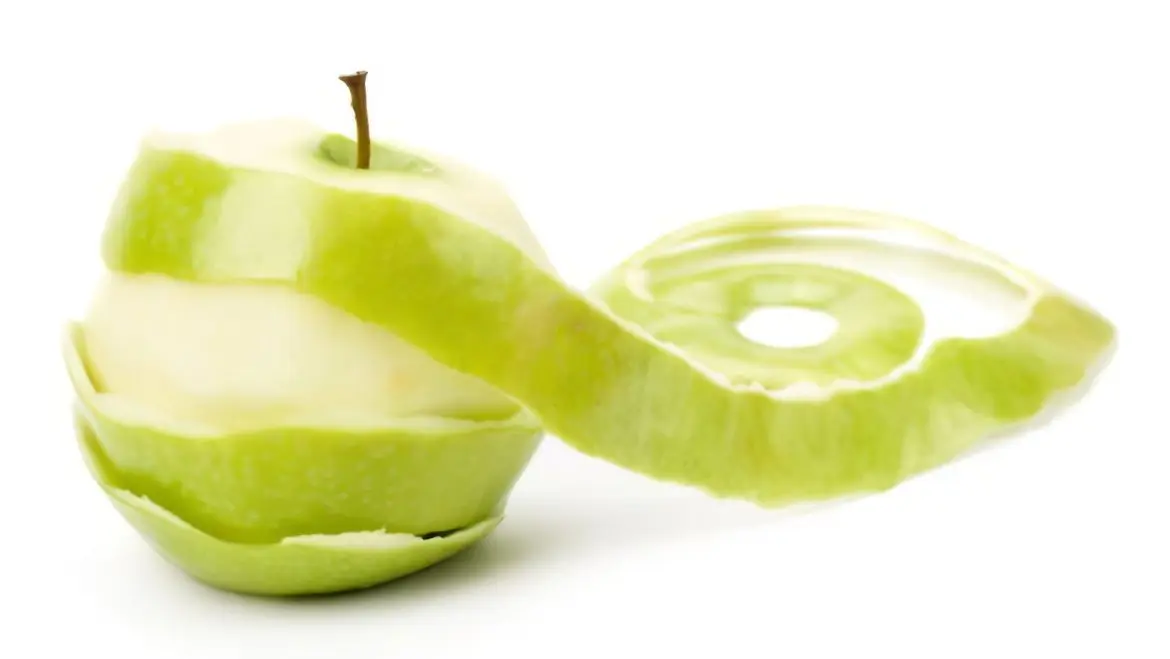
Most of the aforementioned substances are concentrated in the skin and in the pulp underneath, so apples should be eaten with the skin on.
In addition to the peel, apple seeds are also beneficial, as they contain a lot of irreplaceable active components, due to which the development of cancer cells stops and the degeneration of benign tumors into oncological ones is prevented. Apple seeds are also rich in iodine, an acute shortage of which is felt by every resident of large cities.
Another specific substance found in apple pits is the poisonous glucoside amygdalin, which is an anti-cancer vitamin B17. Beneficial in moderate doses, poisonous in large doses.
The benefits of pickled apples
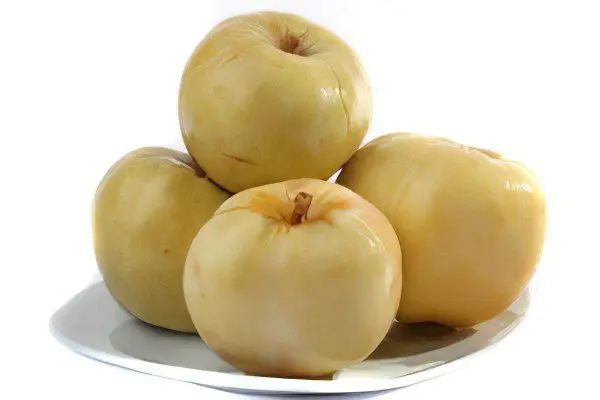
Soaked apples retain the beneficial properties of fresh fruits, are more easily absorbed by the body and are stored for a long time, are an excellent product for the winter diet, restore the body’s vitamin and mineral reserves and fill it with energy.
There are many recipes for pickled apples, the cooking method depends on your taste preferences – someone likes sweet apples, and someone likes sour fruit and vegetable preparations with cabbage that can be put on the table like a salad. Previously, apples were soaked in tubs and wooden barrels under oppression, where they were perfectly stored all winter, picking up taste and spicy aroma from the brine.
Old recipes can be adapted to modern realities and glass containers can be used to soak apples. It is easy to prepare pickled apples in a glass bottle at home, they differ little in taste from fruits soaked in a barrel, and the benefits of apples are preserved almost completely.
Fruits for homemade preparations must be fresh and whole without damage to the skin. Be sure to use ripe fruits picked in late autumn, but the flesh should be firm and firm, overripe apples with decaying flesh are not suitable for soaking.
Several varieties of apples are suitable for soaking. The most commonly used are antonovka, pepin, titovka and pineapples. The firmer the pulp of the apples used, the longer they need to be aged and soaked to make their density suitable for further processing. Therefore, it is most profitable to immediately buy apples of the required density (both not hard and not soft).
We hope that it is obvious to everyone that for high-quality urination, only natural products grown in gardens from an ecologically clean zone are needed. Reach out to local residents of villages and villages who do not know what it means to use pesticides and other chemicals.
Of these apples, you need to choose only the most ripe and whole, with a peel without dents or cracks. Even a small dent with rotten pulp can become the very “fly in the ointment” that will spoil the entire product obtained as a result of urination.
When soaking in a container with apples, you need to regularly add clean water, as the pulp of the fruit absorbs it like a sponge. If you allow the skin of the upper fruits to be exposed, rotting may begin, which will gradually infect all the contents in the container.
Recipe. This Slavic delicacy can be prepared according to many different recipes. The essence of the process is to keep apples in water with the addition of various spices and additives, such as spices, mustard, lavender, herbs (basil, mint, oregano, thyme), honey, alum and even berries (cherries, cherries, blueberries, cranberries, currants).
Of course, you can find a complicated recipe for urinating apples, for example, with cabbage, which is owned by sophisticated housewives, but there will be a high risk of failure. Often, because of the first negative experience, the housewives refuse to urinate in the future. In order for even a beginner to cope with this difficult task, you should choose the simple and reliable options below.
Harm of apples
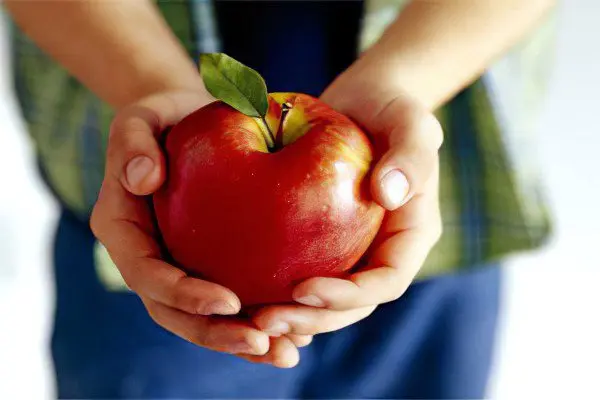
To date, the apple diet remains quite popular, as with its help they achieve impressive results in terms of weight loss. However, the constant use of the same product can negatively affect the state of the body, as it does not receive a significant amount of useful and necessary substances, and some of them receive excess.
For example, apples contain a small percentage of coarse fiber, but in the case of an apple mono-diet, the body, whatever one may say, receives too much of it. As a result, colitis, ulcerative symptoms and gastritis are exacerbated. The abundance of fruit acids, obtained daily, provokes the launch of inflammatory processes in the gallbladder.
Also, apples are harmful not only with fruit acids, but also with various sugars, and the fruits of red varieties contain much more sweetness than is useful. This combination has a detrimental effect on tooth enamel, and its thinning provokes tooth sensitivity and increases the risk of all dental diseases.
Sweet apples of red and yellow varieties are forbidden for diabetics, as they have a too high glycemic index. The same danger carries apple juice, whether it is freshly squeezed or factory-made. In addition, too frequent consumption of apple juice contributes to the rapid dissolution of tooth enamel, which can cause teeth to crumble and develop hypersensitivity.
And the last thing that harms apples is parasites. On apples, after lengthy research, eggs of animals that provoke both helminthiases, and ascariasis, and nematodes were found. And although this applies to all fruits and vegetables, apples, as the most popular fruit, must be especially carefully washed before use under running water.
Are apple seeds dangerous?
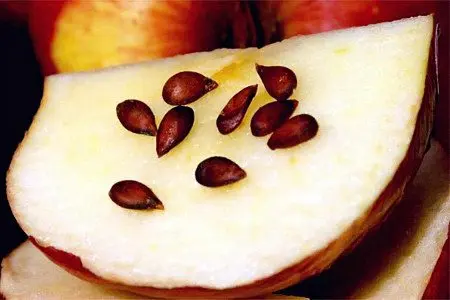
The apple is a fruit popular on all continents. Scientific discoveries, historical events, cultural traditions are associated with the apple. Apple trees are easy to cultivate and their taste can be adapted to specific requirements due to their genetic diversity.
Regular consumption of apples provides antioxidant protection to the body. Active compounds help fight oxidative damage to cells, which provokes health problems, the development of oncological processes. No wonder modern people are increasingly recalling the saying “one apple a day scares away the doctor.”
Anyone who has ever bitten off an apple will easily remember the taste of small black seeds. Their bitter taste contrasts sharply with the sweetness of apple pulp. It’s all about amygdalin, a special compound that, reacting with digestive enzymes in the human gastrointestinal tract, releases cyanide. A couple of seeds do not cause poisoning. Acute intoxication is possible only with the use of a large number of seeds.
How does cyanide from seeds work?
It is known from the school curriculum that cyanide is one of the most dangerous poisons. It has been used more than once as a deadly weapon, in mass suicides, chemical warfare. Cyanide occurs naturally in the form of cyanoglycosides in the seeds of various fruits. Amygdalin – characteristic of apple seeds.
Apple seeds, like other fruits, are covered with a strong shell that is immune to the juices of the human digestive system. When chewing seeds, the outer layer is destroyed, amygdalin is released, which triggers the formation of cyanide when interacting with certain enzymes. If there is little dangerous compound, it is easily excreted from the body. High concentrations of cyanide are dangerous.
What dose of cyanide is considered lethal?
The Centers for Disease Control and Prevention (CDC) defines a lethal dose of cyanide when taken orally as 1-2 mg per 70 kg of body weight. In other words, 2 mg of cyanide is enough to kill an adult male.
One apple contains an average of 5 seeds. The number of seeds may increase with the age of the plant. The mortal threat is represented by 200 seeds, which can be obtained by eating 40 whole apples.
Data released by the Agency for Toxic Substances and Disease Registry (ATSDR) suggests that even much lower doses of cyanide pose a health risk. Cyanide causes damage to the heart, brain, can lead to coma or cause death. ATSDR experts warn that hazardous substances are contained not only in apple seeds, but also in the seeds of peaches, apricots, and cherries.
The main symptoms of cyanide poisoning are shortness of breath, convulsions that develop very quickly and can cause loss of consciousness.
Features of apple seed oil
After obtaining apple juice, the product of seed processing remains – apple oil. The content of amygdalin in it is negligible and does not pose a threat to health.
Apple seed oil is added to anti-inflammatory formulations for skin care, hair conditioners. The product is an excellent source of antioxidants, which, when ingested, trigger anti-cancer protection. Studies have shown that apple seed oil inhibits the growth and reproduction of pathogenic bacteria and yeasts.
How to store apples at home?

Apples are perfectly stored at home and can lie all winter. But it is important for storage to choose only perfectly fresh fruits without specks and the slightest sign of decay – one rotten fruit, upon contact with other apples, can spread damage to all stocks and reduce their shelf life.
You can keep apples in cardboard or wooden boxes, they are wiped with glycerin and wrapped individually in a thin sheet of paper, lined with sawdust. The temperature in the storage room should not rise above zero degrees Celsius, the optimum humidity is 80-90%.
If you have a summer cottage, but no cellar, you can store fruits even in shallow pits (45-50 cm), dug specifically for this purpose. The bottom of the recess is laid with branches of coniferous plants to prevent damage by bacteria and rodents. The fruits are immersed in a plastic bag, tightly tied, lowered into a pit and sprinkled with earth.
How long can apples be stored? Apples of summer varieties lie on average for two to four weeks, if special measures are not taken to extend their “life span”. Autumn and winter varieties, such as Anis, Antonovka, Florina, Winter lungwort, Autumn striped and others, can lie for a month or two, and under special conditions – from seven months to a year. For the preservation of summer varieties of apples, it is important that the temperature does not drop below zero, winter varieties withstand temperatures down to -3 ° C, but they do not tolerate temperatures above +5 and deteriorate.
How to store dried apples at home? If, when storing fresh apples in the refrigerator, it is important to prevent the fruit from losing moisture, for which they are stored in tightly closed plastic bags, then for the preservation of dried apples, it is important to prevent an increase in humidity levels. The best container for storing apple dryers is a glass jar with a screw cap, it is placed on the top shelf of the cabinet, where the air is dry and warm. Permissible storage temperature is from 0 to +8 °C Celsius.
Apples: Do’s and Don’ts
Is it possible to eat apples with gastritis?

Apples can be included in the diet of patients with hyperacidity gastritis, but during the period of exacerbation, sweet varieties should be preferred and eat them baked. Sour apples of green varieties for gastritis are useful to use grated on an empty stomach in the morning, combining this with a special diet that excludes sweet, fatty and spicy foods, fresh bread and other foods that provoke intestinal irritation. The use of apples for medicinal purposes in gastritis is carried out in courses – the first month they need to be eaten fresh daily in the morning, in the second month three times a week is enough. During periods of exacerbation, it is recommended to eat apples only baked without sugar for two weeks.
As already mentioned, it is better not to eat apples at night – they stimulate the secretion of gastric juice, increase appetite and promote increased gas formation, which is not combined with normal sleep.
Is it possible to eat apples while breastfeeding?

Green apples are the safest for consumption, they can be consumed even by women weakened after childbirth to refresh themselves and supply the body with vitamins, minerals, and dietary fiber. During pregnancy and after it, the work of the intestines may be disturbed, constipation is often observed in women – apples help to solve this problem. But there is one caveat – raw vegetables and fruits can provoke increased gas formation, so if you feel discomfort after eating apples, you should refrain from these fruits. You can minimize this risk if you eat baked apples.
Red apples during breastfeeding should be used with caution. Firstly, plant pigments that give the skin of the fruit a red tint are often allergens and can provoke rashes and intestinal disorders in the newborn. Secondly, red apples are most often sweet varieties, and sugars in combination with fruit acids damage tooth enamel, promote calcium leaching from the body, which is especially dangerous for nursing mothers, who already lose a lot of calcium with breast milk. In addition, a large amount of carbohydrates in sweet apples can cause pain and colic in an infant, disrupting the normal functioning of the digestive tract.
Apples contain a biologically available mineral complex, supply the body with calcium, sodium and iron, help restore hemoglobin levels when they decrease, and normalize blood pressure. The increased content of dietary fiber in apples contributes to the normalization of the digestive system and bowel cleansing processes – it is enough to eat one apple a day to get the necessary daily fiber intake.
Baked apples are not only a delicious and fragrant dessert, but also a very healthy product. In this form, apples are more easily absorbed by the body; during baking, pectin substances are concentrated in them, which have an anti-inflammatory effect and not only help with intestinal disorders, normalizing the activity of the gastrointestinal tract, but also accelerate the process of a woman’s recovery after childbirth. Preparing such a dish is very simple and fast – it takes two to three minutes to peel apples from the core (from the inside they can be filled with honey and chopped walnuts) and fifteen minutes to bake.
Apples are useful not only for nursing mothers, but are also used as the first complementary foods for six-month-old babies – it is better to choose green and yellow apples for this purpose so as not to provoke allergic rashes in the child.
Do apples have iron?

Dried apples are rich in iron, so they can be included in the diet to increase the level of hemoglobin in the blood – 100 grams of dried apples contain up to 2,0 mg of iron, and in addition – rutin, vitamin C and folic acid, due to which iron is better absorbed. More iron content in apples of sour varieties, such an apple can be visually determined by its tart taste and rapid darkening at the site of the cut or bite of the fruit. The flesh of an apple turns brown due to the oxidation of iron, so quickly darkening apples are the most beneficial for people with anemia and fragile blood vessels. Only apples must be dried.
There is also a folk remedy to “enrich” an apple with iron – for this, a nail is stuck into it for two to three days. However, this recipe is rather doubtful, since bacteria, pathogens of infectious diseases, can be introduced into the fruit with a nail.
Is it possible to freeze apples for the winter?

If you do not have a cellar for storing fresh fruits in winter, then you can freeze them in the refrigerator, where they are safely stored for up to 12 months, retaining their beneficial properties and taste. You can freeze apples both in the form of slices and crushed in mashed potatoes – it is convenient to use such blanks for making charlotte, pie fillings and puff buns. If the size of the refrigerator compartment allows, then you can even freeze whole apples.
The main condition for preserving the useful properties of the product is to use only fresh fruits without signs of spoilage during freezing, do not re-freeze them and prevent moisture and air from entering the storage container.
Do plucked apples ripen in storage?

Unlike fruits such as pears, kiwis and persimmons, apples do not ripen during storage, which is why it is very important to choose the right time for harvesting.
Apples have an interesting feature that is often used by farmers – during storage, they release ethylene, which speeds up the ripening of other fruits. So, if you put an apple stored next to unripe pears, they will quickly become fragrant and soft. However, storing apples next to potatoes is not recommended – this will adversely affect the quality of both products. Apples will acquire a starchy aroma and taste, and the shelf life of potatoes will decrease.
Is it possible to eat apples at night?

There is no single answer to this controversial question. On the one hand, an apple eaten before bedtime helps to satisfy hunger with a small amount of calories. Also, in the absence of proper conditions (for example, on a hike), an apple helps to clean teeth from plaque and prevent the growth of carious bacteria.
On the other hand, a fruit eaten at night stimulates the appetite, which will make you eat something extra, and the fiber contained in apples can provoke colitis and flatulence.
Conclusion
Apples are a fruit familiar to our latitudes. They have excellent taste and can protect against many dangerous diseases, including diabetes and cancer. Vegetable fiber fibers help to cope with excess weight, heal the intestines.
One medium fruit provides 3/4 of the recommended daily intake of apples. To get the maximum amount of nutrients, eat an apple with the skin.
Apple seeds contain amygdalin, which, when ingested, reacts with food enzymes and releases cyanide. Single seeds do not pose a threat to human health, but it is better to refrain from using them so as not to cause adverse reactions from the body.
[Video] Product of the Day – Apple:









